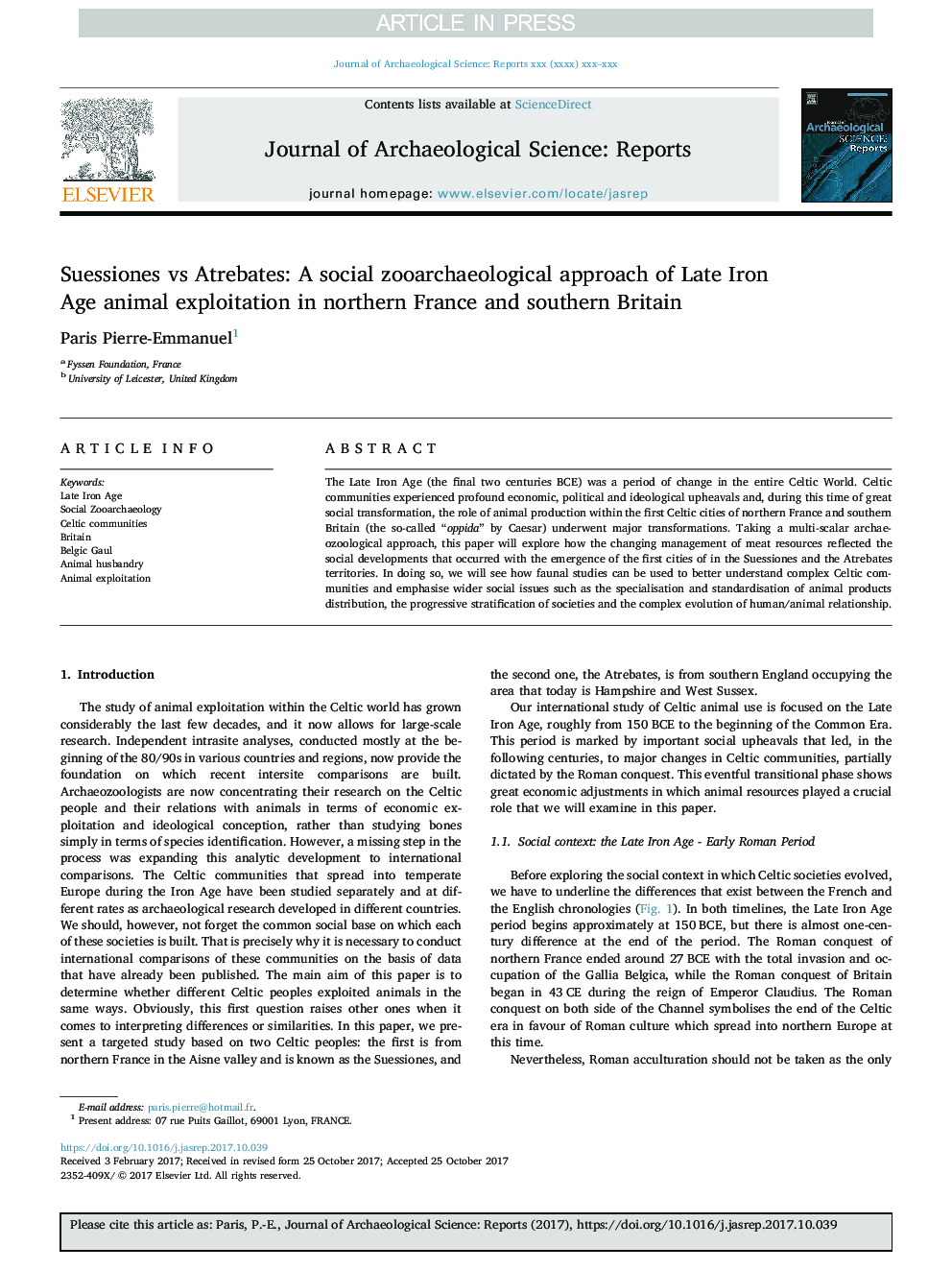| Article ID | Journal | Published Year | Pages | File Type |
|---|---|---|---|---|
| 11005201 | Journal of Archaeological Science: Reports | 2018 | 14 Pages |
Abstract
The Late Iron Age (the final two centuries BCE) was a period of change in the entire Celtic World. Celtic communities experienced profound economic, political and ideological upheavals and, during this time of great social transformation, the role of animal production within the first Celtic cities of northern France and southern Britain (the so-called “oppida” by Caesar) underwent major transformations. Taking a multi-scalar archaeozoological approach, this paper will explore how the changing management of meat resources reflected the social developments that occurred with the emergence of the first cities of in the Suessiones and the Atrebates territories. In doing so, we will see how faunal studies can be used to better understand complex Celtic communities and emphasise wider social issues such as the specialisation and standardisation of animal products distribution, the progressive stratification of societies and the complex evolution of human/animal relationship.
Related Topics
Social Sciences and Humanities
Arts and Humanities
History
Authors
Paris Pierre-Emmanuel,
